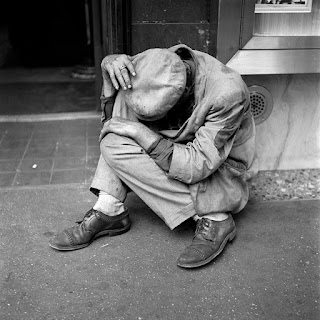20. How to Take Photos 16: Street Photography
Defining Street Photography
This is a photographic genre that takes place in public spaces, and celebrates everyday life and people, as well as random chance and incidents - both commonplace and fantastic. It's a bit like stopping to smell the roses - a moment to relax and reflect on life. Because of this, it is often thought of as candid photography (unposed photos).
But note, not all street photography is candid, and not all candid photography takes place on a street (think of it like a Venn diagram). Just because you're in a street shooting photos, doesn't mean you can't ask people to pose for you:
Street photography generally focuses on people and relationships - but it doesn't have to. Even when a street is empty, it still has the potential for traces of human character and presence. Susan Sontag described street photography like this,
"The photographer is an armed version of the solitary walker reconnoitering, stalking, cruising the urban inferno, the voyeuristic stroller who discovers the city as a landscape of voluptuous extremes. Adept of the joys of watching, connoisseur of empathy, the flâneur finds the world "picturesque."
The Origin of Street Photography
Street Photography emerged in 19th century Paris, which was undergoing major social and political upheaval. With the collapse of aristocracy, and the fall of Napoleon, France underwent years of political turmoil and uncertainty. It also modernized, tearing down whole city sections and building grand boulevards that connected what used to be self-contained, medieval parts of Paris into one large, cohesive and inter-connected whole. It was a fascinating time worth documenting, and so many of the city's intellectuals celebrated the stereotypical flâneur, or stroller.
A flâneur was anyone who went for a relaxing walk - with the purpose of people watching, and waxing philosophically. Far from a lazy endeavor, it was an opportunity to sharpen one's senses, to observe the world and form opinions. The philosopher Balzac described it as "the gastronomy of the eye."
Many artists strived to accomplish this goal through painting and photography. The Impressionists were devoted flâneurs, searching for the best streets and scenes to describe modern life. Famous early street photographers included:
Charles Nègre (1820-1880)
Eugène Atget (1857-1927)
Paul Martin (1864-1944) of London
Alfred Stieglitz (1864-1946) of New York City
As the genre gained acceptance (it was so entertaining!) people began practicing the art in cities around the world. Famous street photographers include:
Elizabeth Alice Austen (American, 1866-1952)
Berenice Abbott (1898-1991) of New York City
Walker Evans (1903-1975) of New York City
Henri-Cartier Bresson (1908-2004) of Paris
Helen Levitt (1913-2009) of New York City
Jack Delano (1914-1997)
Vivian Maier (1926-2009)
Street Photography & The Law
Successful street photography must be done ethically and unobtrusively. You don't want to bother anyone. If someone notices you taking their photo, pause and ask permission. Be prepared to apologize, but also be prepared to smile and make conversation. There's no rule against interacting with people you may want to photograph. Beyond this, think about what you're taking these photos for - where you'd publish them, if the statement you're making is worth it, and if the people depicted actually want to be on display. Remember, the people who view your work will ask these same questions.
While democratic countries value freedom, and it is legal to take photos of people in public places, beware that there are also laws that protect people's right to privacy. This means that any behavior deemed as harassment or defamation is illegal, and can lead to law suits. Harassment is when you bother someone who wants to be left alone, and defamation is when you report any false claim that hurts someone's public reputation.
Tips for Street Photography
1. Timing is Everything. George Carlin once said, “Life is not measured by the number of breaths we take, but by the moments that take our breath away.” If you are patient and observant, you will find these moments out in the street. When they come, you must be ready to get the shot.
2. Because timing is everything, being a street photographer is a bit like being a hunter. You must be quick on the draw, and you must have your camera settings right. And, chances are, most of your photos won't be great - missing your mark is normal. Expect one in a hundred to be great. This is a situation where you aren't in control, all your targets are in motion. So, you should probably use a digital camera, at least until you get the hang of it. With traditional film, you might waste a lot of shots, and run out of film quickly. With digital, you can shoot as long as your card has space and your battery lasts.
3. The busier the street, the less people will be aware of you. If you want to capture images of people being themselves, busy intersections are another option.
4. A telephoto lens can help you zoom in on people from far away, where they're less likely to notice you.
5. The best street photography not only tells a story, it becomes an iconic sign of the times - a historical document, just as important as the biggest news articles and speeches of that time.
.jpg)


































Comments
Post a Comment